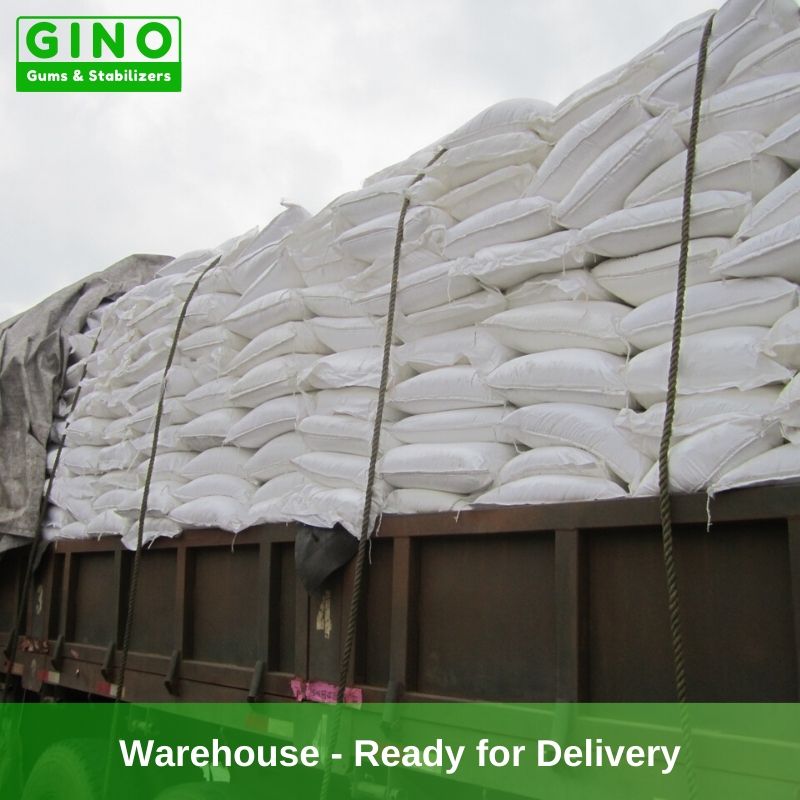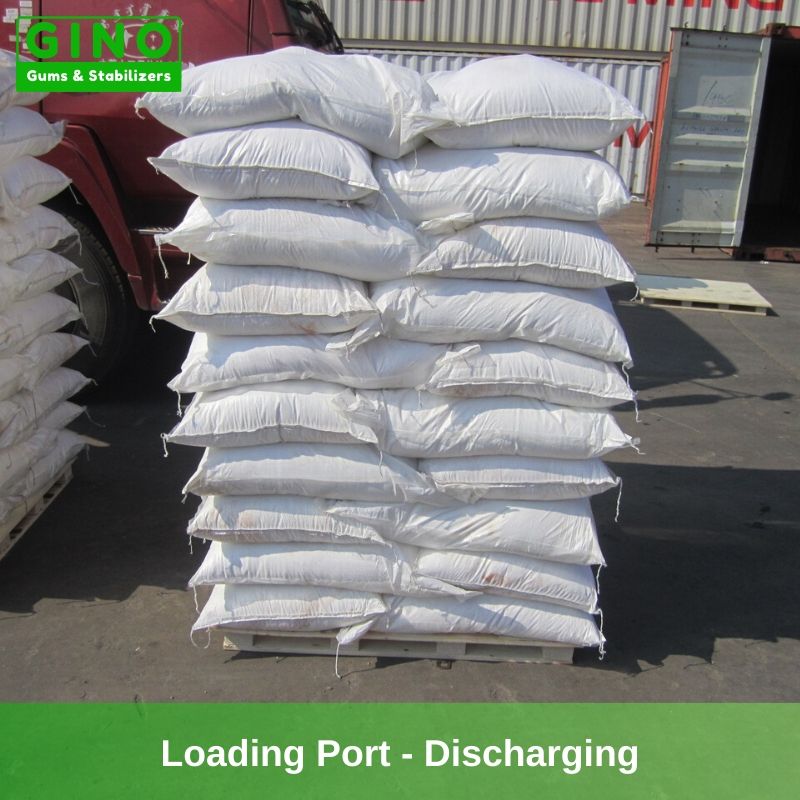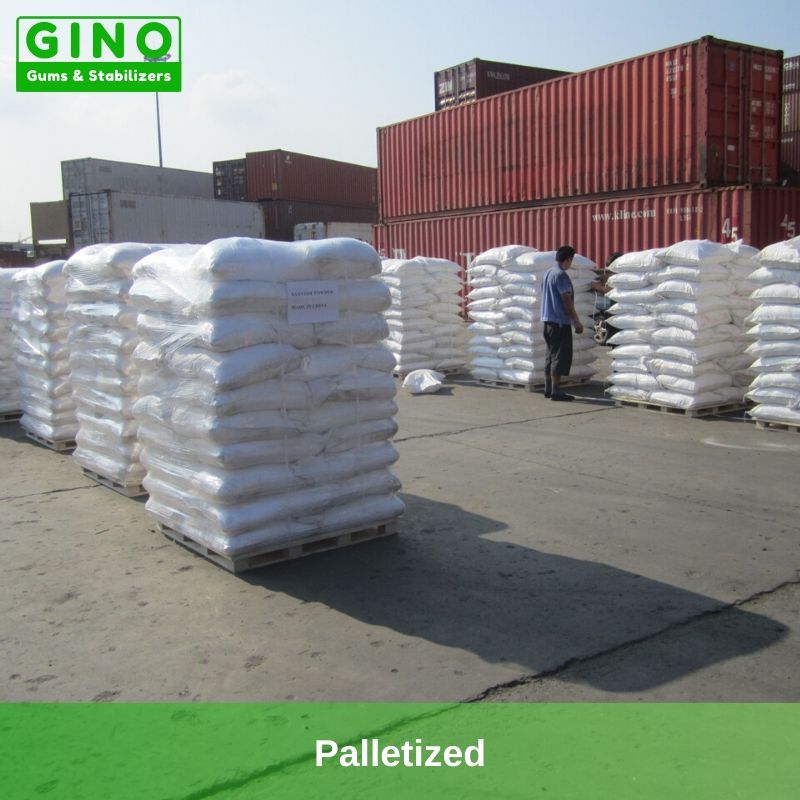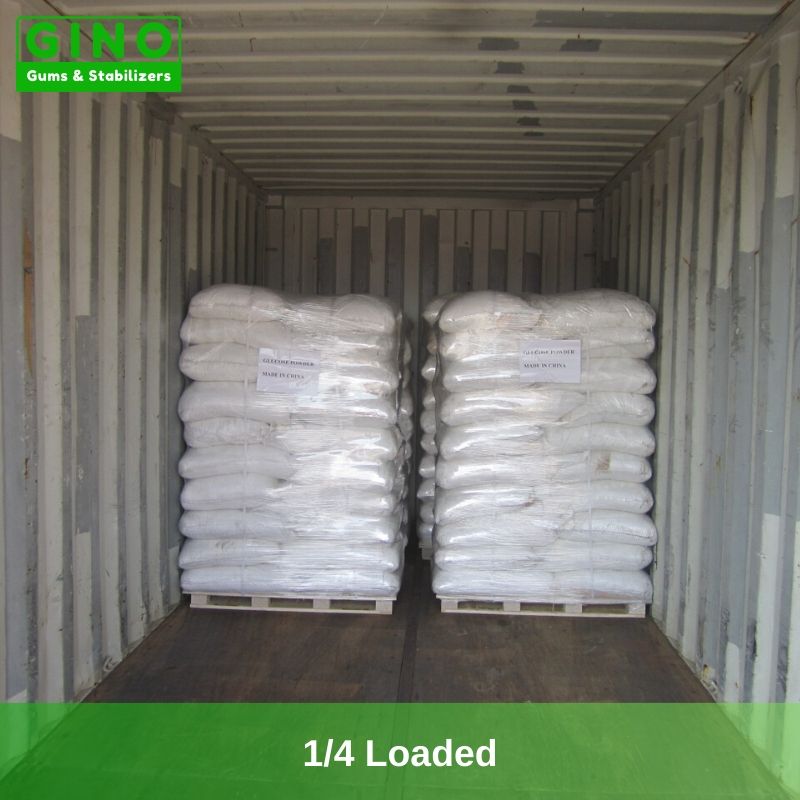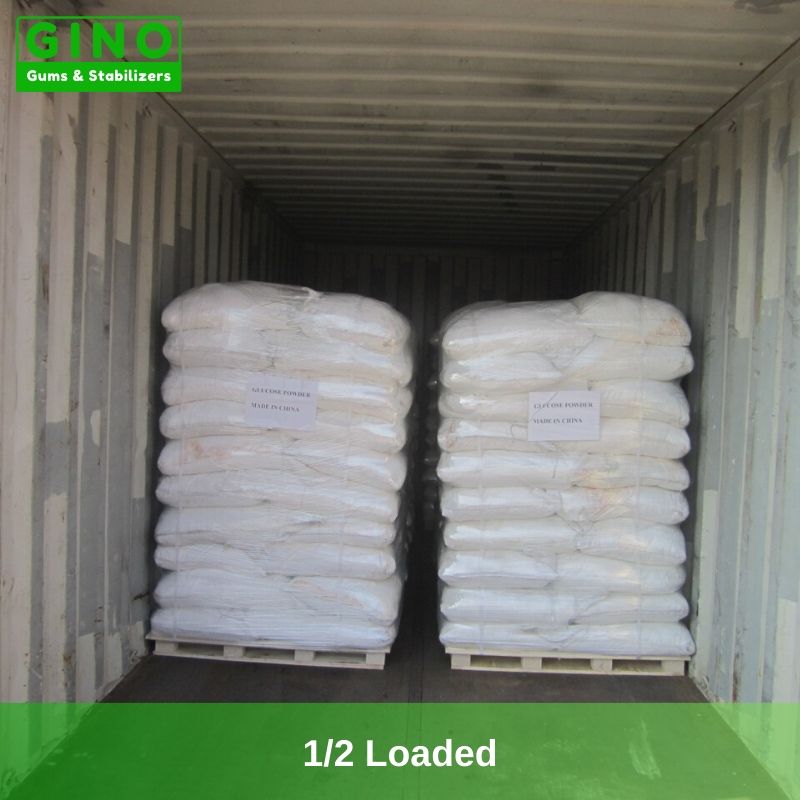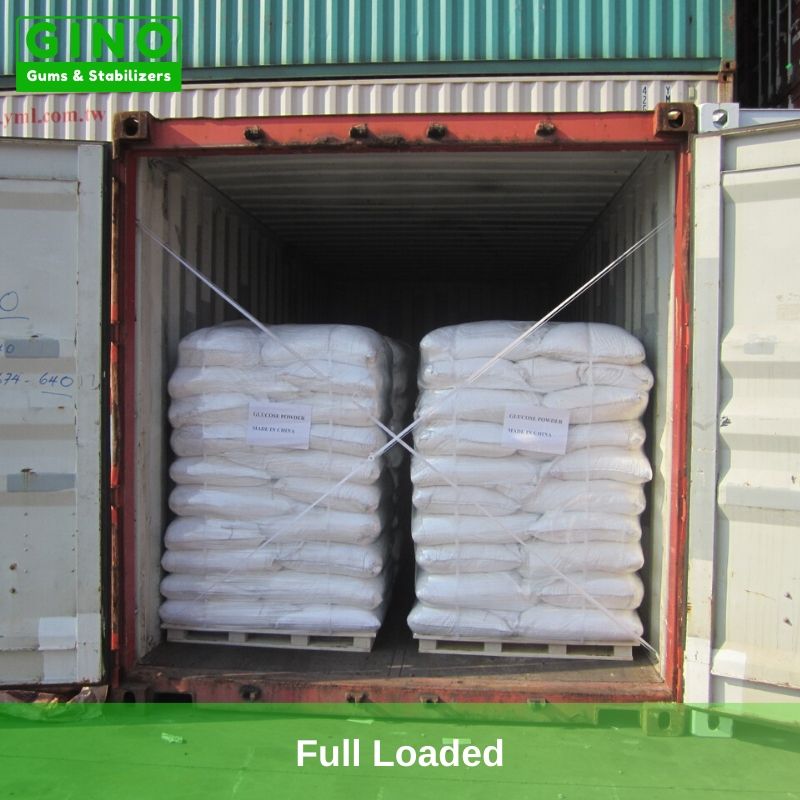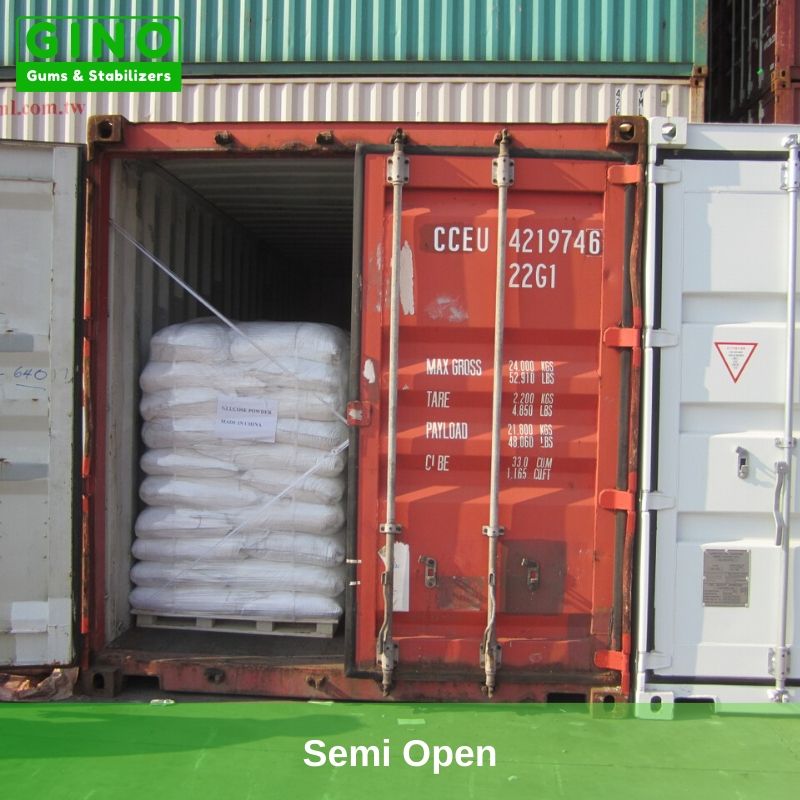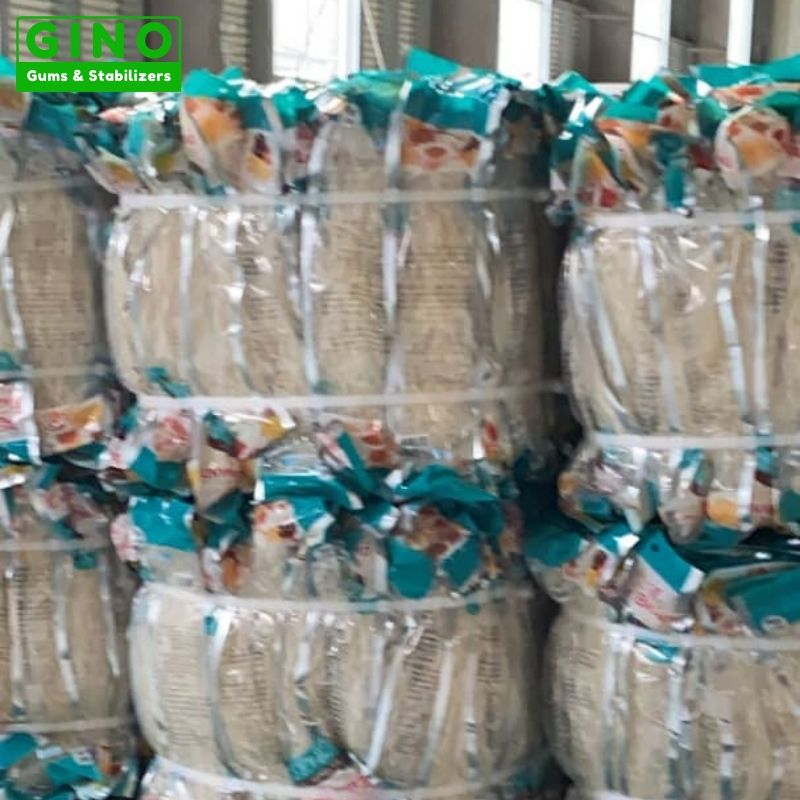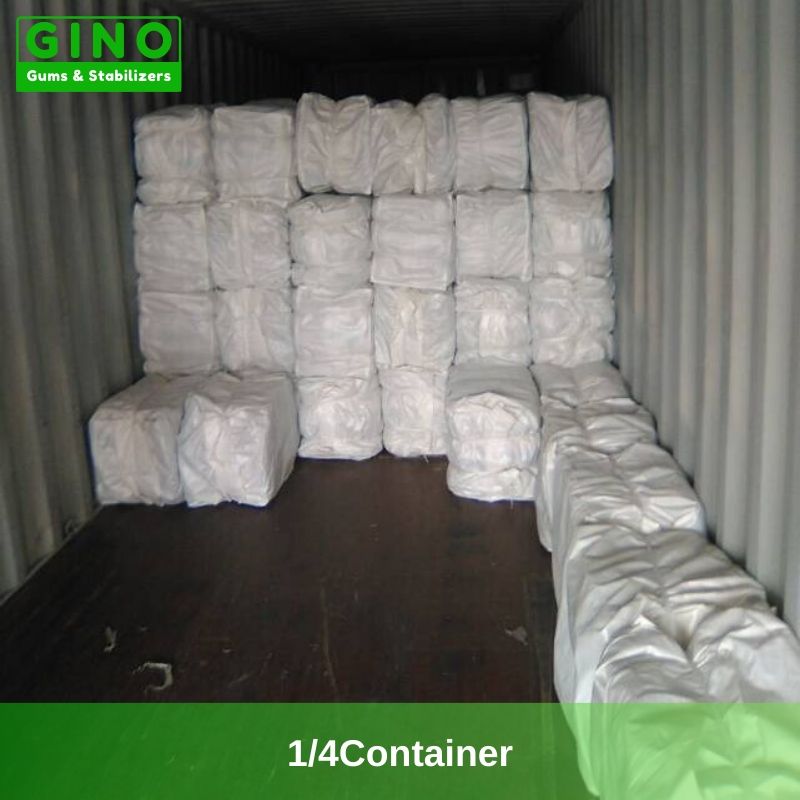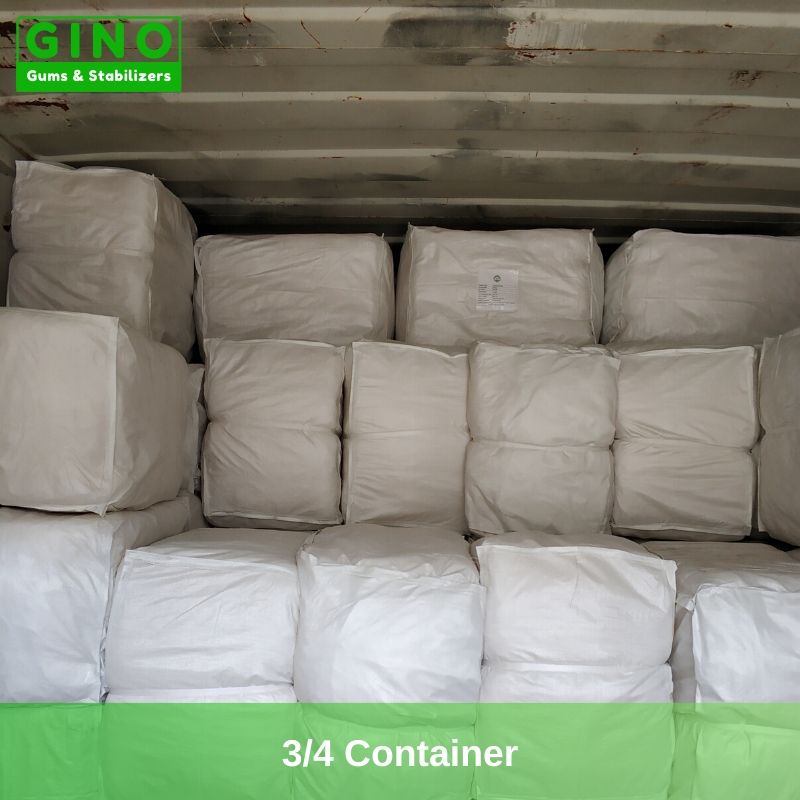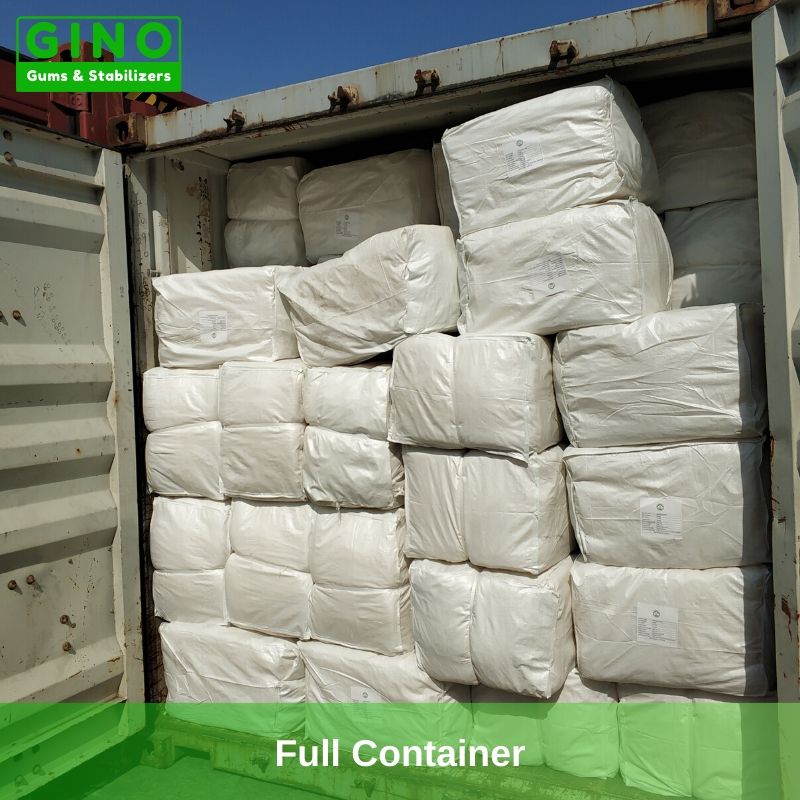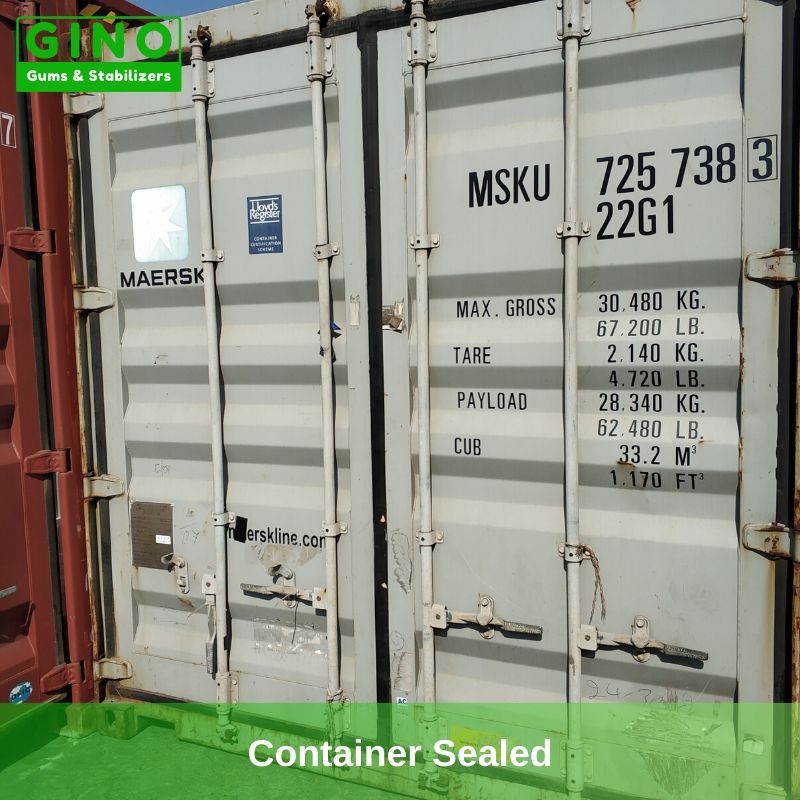Agar Agar
What is Agar Agar
Agar Agar is a seaweed hydrocolloid, or phycocolloid, with a long history of use as a gelling, thickening and stabilising food additive. It is considered to the strongest natural hydrocolloids gums, also the perfect substitute to animal-source gelatin.
As one of the professional agar agar suppliers, exporters in China, Gino is dedicated to supplying you superior products from reliable agar agar manufacturers. With our variety of gelling/stabilizing systems, we can create tailor-made solutions perfectly matched to all your needs.
Contact us to ask about a single hydrocolloid gum or food stabilizers (blends & systems) that would work for your products. Should you have any questions please feel free to send an email to [email protected].
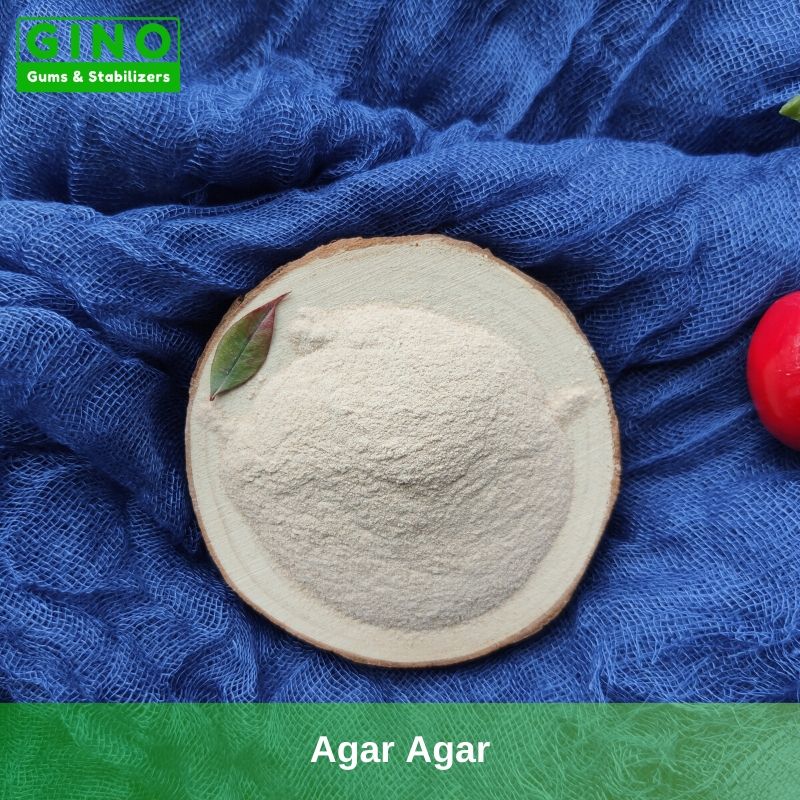
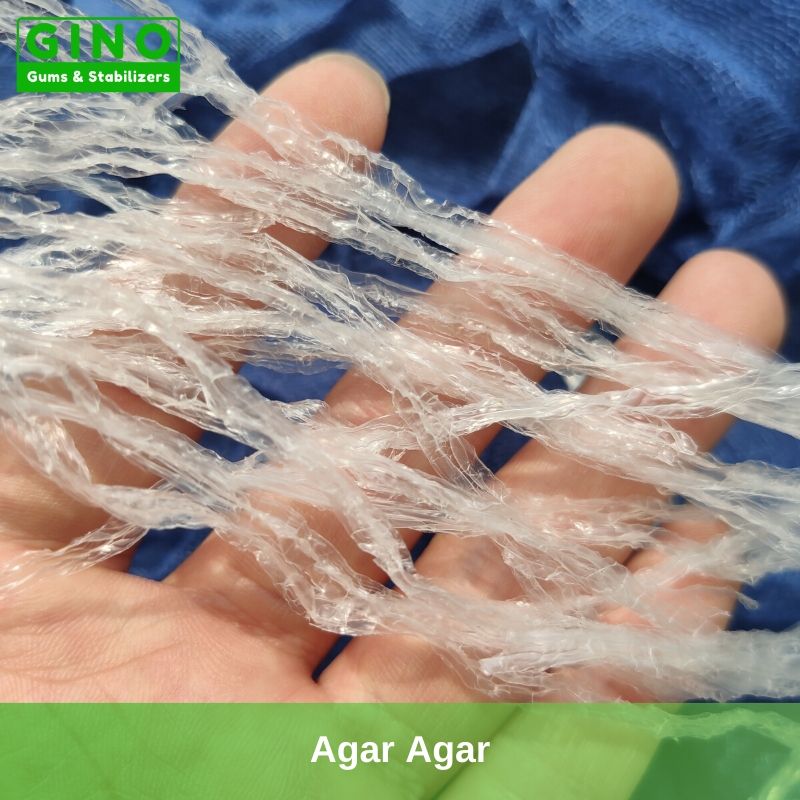

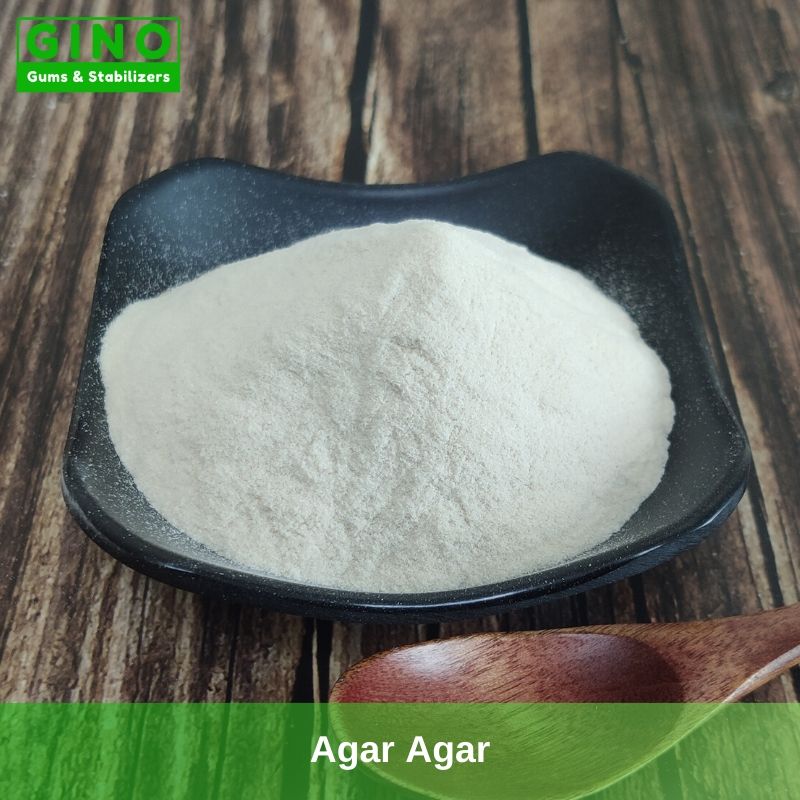
Agar Agar
| Category | Thickeners, Stabilizers |
|---|---|
| E Number | E406 |
| CAS No. | 9000-70-8 |
| H.S. Code | 1302310000 |
| Origin | China |
| MOQ | 500 KG |
| Packaging | Cartons, Bags, Drums |
| Payment Term | T/T, L/C |
GINO_Your Premier Agar Agar Suppliers
What is Agar Agar Made of ?
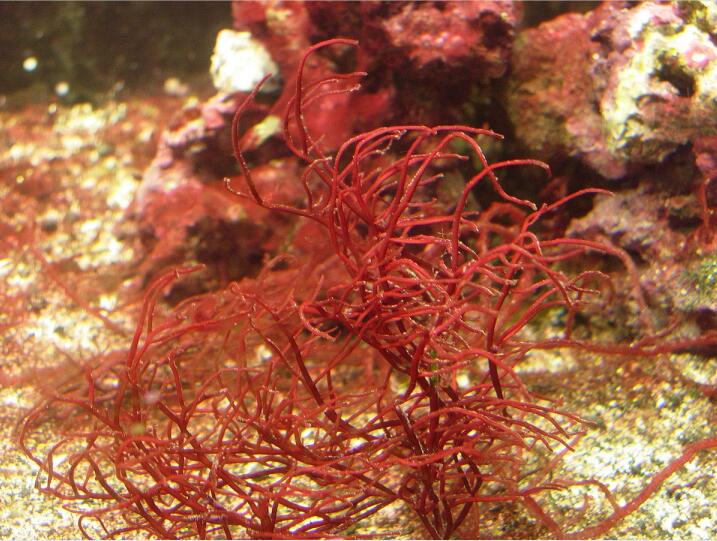
- Raw Materials
Where is agar agar obtained from?
It is a family of linear galactan polysaccharides obtained from the cellular walls of red seaweeds, Gelidium and Gracilaria are the main species utilised for commercial agar production.
Gelidium species were the original materials used in Japan, but shortages in World War II led to the discovery that Gracilaria species were suitable if the seaweed was treated with alkali during processing.
Production Flow Chart
1. Agar Strips
Gracilaria (or Geldium) → Alkaline leaching → Washing → Bleaching → Boiling gel → Filtering → Pushing strips → Freezing → Dehydrating → Drying → Finished product → Packaging.
2. Agar Powder
Gracilaria (or Geldium) → Alkaline leaching → Washing → Bleaching → Boiling gel → Filtering → Pressing → Drying → Crushing → Finished product → Packaging.
Our Agar Agar Product Range
You will enjoy all grades and forms of agar products, including:
Specification Sheet
| Sensory Characteristics | |
| Appearance | It is a fine powder or strips with a slightly off white color and neutral odor and taste. |
| Chemical And Physical Characteristics | |
| Moisture | ≤12% |
| Total Ash | ≤5% |
| Gel Strength(Nikkan Method) | Powder: 500-1200 g/cm2 Strips: 500-700 g/cm2 |
| Ph | 5-7 |
| Mesh Size | 80-100 |
| Starch Dextrin | Not Detectable |
| Gelatin And Other Proteins | Not Detectable |
| Water Insoluble Matter | ≤15% |
| Heavy Metal | ≤1 Ppm |
| Acid Insoluble Ash | ≤0.5 % |
| Microbiological Characteristics | |
| Total Plate Count | Max 5000 CFU/g |
| Yeast and Moulds | Max 300 CFU/g |
| E.Coli | Absent in 5g |
| Salmonella | Absent in 5g |
Remarks:
Specification Sheet is for guidance and reference only. Customer’s results may be different due to variations in testing conditions, equipment and methods.
Our Packaging
As one of the professional and responsible agar suppliers, in addition to providing you with quality products, we also try our utmost to offer you flexible packaging solution, to provide you customize packaging, and our aim is simple, just to:
- Build up your brand sense and develop your private brand
- Promote your own brand image.
- Give your promotional marketing efforts a boost.
- Make you stand out from your competition.
PP Woven Bag Kraft Paper Bag Carton Box Fiber Drum Square Tin Box
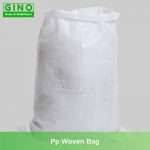
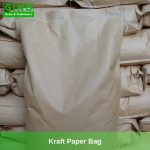

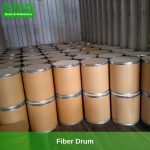

10 g Neutral 20 g Red Ribbon 10-1000 g Private Label 10 Kg Neutral
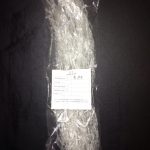
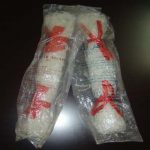
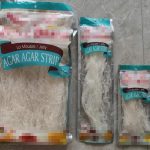
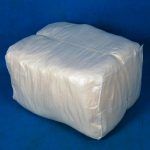
Loading & Delivery & Shipping
You will enjoy:
A variety of packaging styles, Flexible loading methods, Small order quantity, Prompt delivery time ...
| Loading Quantity - Agar Agar Powder | |||
| Packaging | Container | Quantity | Net Weight |
| PP Woven Bag | 1*20' FCL | 640-720 Bags | 16-18 MT |
| Kraft Paper Bag | 640-720 Bags | 16-18 MT | |
| Carton Box | 540 Boxes With Pallets | 13.5 MT | |
| 600 Boxes Without Pallets | 15 MT | ||
| Drum | 320 Drums With Pallets | 8 MT | |
| 400 Drums Without Pallets | 10 MT | ||
| Square Tin | 1,000 Tins With Pallets | 10 MT | |
| 1,200 Tins Without Pallets | 12 MT | ||
| Delivery Time - Agar Agar Powder | |||
| Bags or Carton Packaging | Within 2-3 weeks after the prepayment | ||
| Drum or Tin Packaging | Within 4-6 weeks after the prepayment | ||
| Loading Quantity - Agar Agar Strips | |||
| Packaging | Container | Quantity | Net Weight |
| 10 Kg Pp Woven Bag | 1*20' FCL | 250 bags | 2,500 Kgs |
| 10 g Plastic Bag | 250 bags= 250 Bundles * | 1,200 Kgs | |
| 20 g Plastic Bag | 250 bags= 250 Bundles * | 1,200 Kgs | |
| Delivery Time - Agar Agar Strips | |||
| Bulk 10 Kg Packaging | Within 2-3 weeks after the prepayment | ||
| Retail Small Packaging | Within 4-6 weeks after the prepayment | ||
Remarks:
- If 10 g plastic bag, 1 bundle =10 g * (400-500)=4.0-5.0 kgs;
- If 20 g plastic bag, 1 bundle =20 g * (200-250)=4.0-5.0 kgs.
- From Packing Design, Packing Material Selection, Packing Printing to Manual packing, Delivery, all in one package service.
We only choose the well-reputed shipping lines to ensure safety and time. From our warehouse to the destination port, or even to your warehouse, "Full Tracking Service" is always with you.
Agar Agar Property
The most important characteristics of agar agar are the following.
- 1. Its tremendous gelling power in an aqueous environment, which enables it to form a more resistant (strong) gel than any other gelling agent, assuming an equal concentration of gel is used.
- 2. It can be used over a wide range of pH values, from 5 to 8, and in some cases can exceed these limits.
- 3. It withstands heat treatment very well and can be sterilized well even above 100°C.
- 4. 1.5% aqueous solution gels between 32°C and 43°C and does not melt below 85°C. This is a unique property of agar compared to other gelling agents.
- 5. Agar Agar gives a gel without taste, no need to add cations with a strong taste (potassium or calcium), it can be used without problems in the gel of food with a soft taste.
- 6. It absorbs and enhances the flavor of the product with which it is mixed, and acts as a flavor fixing agent to fix it for a long time.
- 7. Its gel is very reversible and can be repeatedly gelled and melted without losing any of its original properties.
- 8. It is possible to obtain a transparent gel which is easily colored, and its refractive index can easily be increased by the addition of sugar, glucose, glycerin, etc., to give it an attractive brightness.
- 9. The gel is very stable, and does not cause precipitation in the presence of certain cations, as is the case with calcium-containing alginate.
Agar Agar Benefits
Healthy
Gel Performance
Vegan
Lab Use
Agar Applications - Uses of Agar
1. Food Applications
Agar Agar was the first hydrocolloid to be used in the human food industry. In the beginning, it was only used in the Far East, but the applications have been extending all over the world for more than a century.
In the human food industry, agar is used mainly as a gelling agent and in a secondary way as a stabilizing agent and for controlling viscosity. It is used as an additive, not as a nutrient. The gelling power of agar is so high that it is used at 1% maximum concentration; for viscosity control and as a stabilizing agent the proportion used is 1/100 or less. For this reason the ingested quantities are very small and, because agar is not easily digested by the human body, its calorie contribution is negligible and thus agar can be used in special diet food.
Agar applications in the food industry are based on its special characteristics and the most important applications are the following.
-
Confectionery:
In confectionery, to prepare jellies, marshmallows and candies or candy fillers. -
Marmalade:
In marmalade production, agar is used as a thickening and gelling agent. -
Fruit Salad:
Mitsumame production in Japan is very important; this is a fruit salad mixed with agar gel cubes, duly coloured, salted and flavoured with fruit flavour. The agar used for this kind of fruit salad must allow the cans to be sterilized without the cubes melting or losing their corners or edges. For this purpose certain types of Gelidium agar are used. -
Bakery:
In bakery, agar is used to cover cakes, in icing doughnuts, and when it is applied to chocolate it allows a good adherence to the base without cracking. In general agar is utilized to prevent dehydration of these confectionery products. -
Jelly:
Agar is also important in fruit jelly preparations. When compared with pectin, agar has the advantage of not needing high sugar concentrations to form a gel. -
Yoghurt:
Its application in yoghurt is also very important especially when consumers started to require less acid products and, therefore, casein cannot contribute to the maintenance of the product consistency, as it previously did. -
Meat:
In the meat industry, and especially in the preparation of soft-boiled sausages, its use has permitted the reduction of fat content that acted before as bonding. Today the industry is trying to limit fat content in order to reduce cholesterol. -
Canned Food:
Agar is also used on a large scale in canned products like "Scatola" meat (beef blocks in gelatin) - very popular in Italy, or chicken in gelatin - very common in Canada, cow tongue in gelatin -selling well in Denmark, lamb tongue in Australia, or other different types of meat and fish aspics. In dressings and extracts it is used as a thickener and stabilizer. -
Drinks & Beverages:
In smaller quantities, agar is used to increase the viscosity of some alcoholic liquors.
Agar jelly, Water dessert jellies, Confectionery, Bakery products, Dairy products, Fermented products, Canned meat and fish product, Soups and sauces, Fining agent, Health foods.
2. Non-Food Applications
Culture media and other bacteriological applications, Plant tissue culture, Dental mould, Pharmaceutical preparations.
Agar in Microbiology:
Its uses in microbiology are based on the special properties: a gelling temperature of 32-36°C, a melting temperature of 85-86°C, a lack of hydrolysis by bacterial exoenzymes and its ability to be prepared without bacterial inhibitors. The above temperatures refer to culture media gelled with agar and which contain 10-11 g agar per litre of culture media.
Agar in Biology:
You may ask, Why is agar used to grow bacteria?
The use of agar in bacteriology is one of the most important uses and requires strict physical-chemical control as well as the absence of hemolytic substances and what is more important and difficult, the absence of any bacterial inhibitors. Robert Koch started using agar in 1881 to gel culture broths when preparing solid culture media and this was the first introduction of this oriental product to Europe.
Agar in Pharmacy:
The application of agar in pharmacy as a smooth laxative is well known. Lately it has been used as an excipient in pharmaceutical preparations. In some Western countries agar is used as an antirheumatic since a prolonged treatment has permitted important improvements in patients' health. Agar has been used to stabilize cholesterol solutions.
Agar in Microbiology
Agar in Biology
Agar in Pharmacy
- Contact Form
Need to find the best reliable E406 agar suppliers, manufacturers, exporters in China? As one agar company, all grades and forms of agar products could be provided by Gino. We could help you find the perfect agar agar for your application.
Please complete fields below and we will respond to you as soon as possible.
Your Reliable Agar Agar Suppliers!!!
- Related Products

